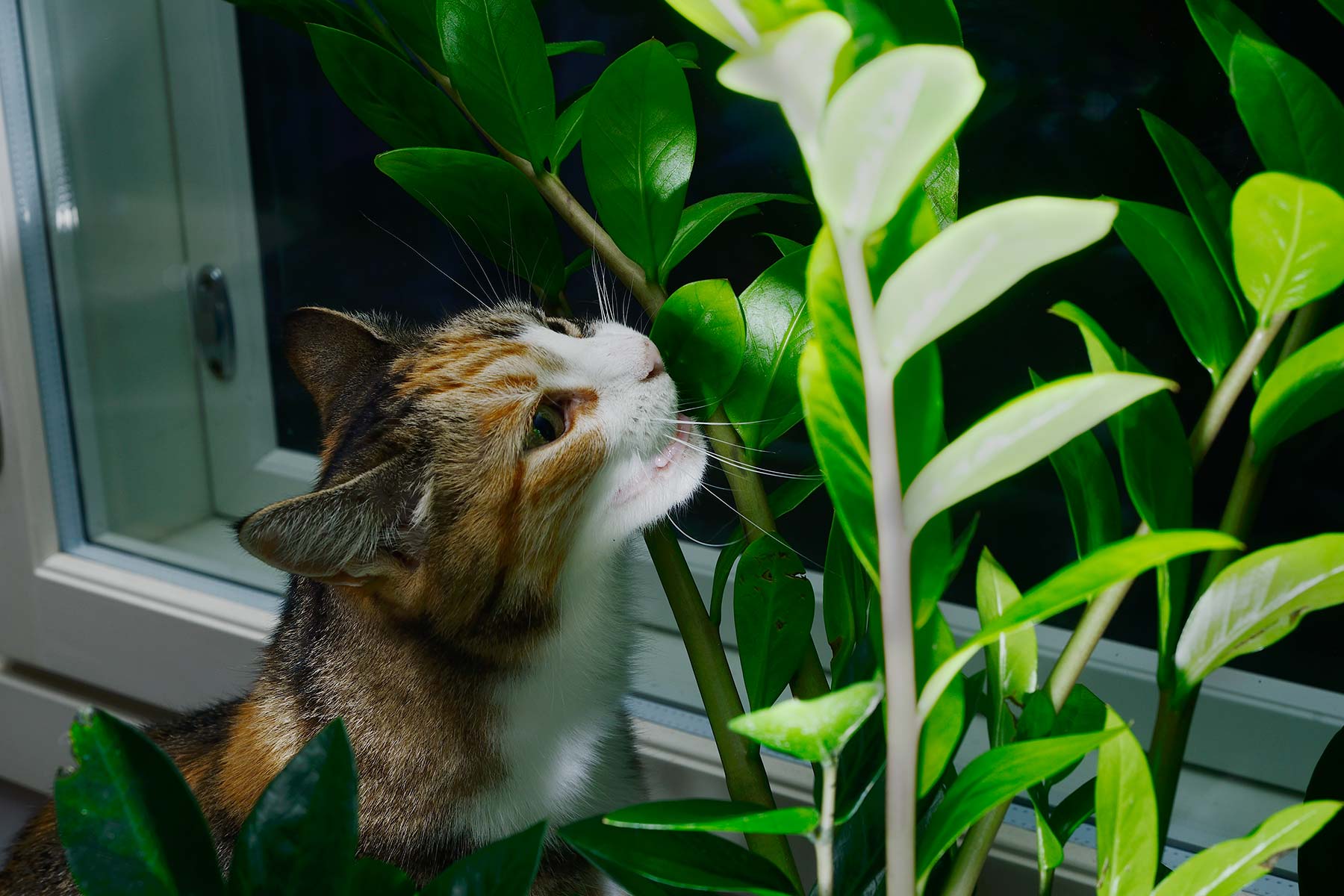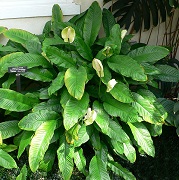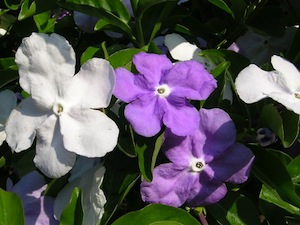
A NUMBER OF OUR PATIENTS HAVE EATEN POISONOUS PLANTS AND UNWITTINGLY POISONED THEMSELVES. These included both dogs and cats.
There are a large number of potentially poisonous plants in our gardens which inquisitive pets can munch on by mistake. Sometimes this can be fatal.
Described below are some of these plants. Be aware that with most poisonous plants, any part of the plant can be dangerous.
CYCADS (Macrozamia species) are ancient small trees that have become popular again in our gardens recently(see picture below). Unfortunately all parts of the plant are toxic and can cause vomiting, diarrhoea, liver damage , and depression.
The PEACE LILY contains calcium oxalate crystals which can cause skin irritation, burning sensation in the mouth, difficulty swallowing, and nausea. Luckily pets usually will not eat enough to get anything but gastro-intestinal signs.

YESTERDAY TODAY and TOMORROW (Brunfelsia species) Is a very attractive ornamental shrub. Mainly dogs are attracted to it and symptoms of toxicity are diarrhoea, dribbling and tremors and seizures.

LILIES Stargazer Lilies(below) are bold, beautiful, fragrant and… poisonous. Especially for cats. These lilies, and their botanical relatives, including Easter lily, Day lily, Asian lily and Tiger lily, are popular choices for holiday bouquets and are the favorites of many gardeners. Cats are especially susceptible to the toxin which can be found in any part of the plant. Cats can ingest the poison just by grooming themselves after getting pollen on their coat from brushing up against the flowers.

Below is a more detailed list of potentially poisonous plants.(This list is not exhaustive and it always pays to talk to your local nursery about how safe individual plants are before planting).
Please contact the clinic on 3284 5133 if you have any queries.
POISONOUS PLANTS (c/- Burkes Backyard Fact Sheet)
Anemones or windflowers (Anemone coronaria)
Bulbs (daffodils, tulips, jonquils, snowdrops)
Caladium bicolour (indoor foliage plant)
Castor oil plant (Ricinus communis)
Calice vine (Solandra maxima)
Cherry tree (Prunus serrulata)
Clematis (Clematis sp.)
Cotoneaster (Cotoneaster glaucophylla)
Cycads (notably their seed pods)
Daffodils (Narcissus)
Daphne (Daphne odora)
Delphinium
Devil’s ivy (Epipremnum aureum)
Dicentra (Dicentra spectabilis)
Dieffenbachia
Euphorbias (poinsettias, Euphorbia characias wulfenii)
Food around the house: ie, apricot kernels, avocados, chocolate, grapes, macadamia nuts, onions, potatoes, raisins, sultanas are all potentially poisonous to pets
Foxglove (Digitalis purpurea)
Golden robinia (Robinia pseudoacacia ‘Frisia’)
Hellebore (Helleborus orientalis)
Hemlock (Conium maculatum)
Holly (Ilex varieties)
Hydrangeas
Indoor plants: many are poisonous to pets, so keep all indoor plants out of the reach of puppies and kittens especially, but also adult dogs and cats.
Iris
Jerusalem cherry (Solanum pseudo-capsicum)
Jasmines (the climbers)
Lantana (Lantana camara)
Lilac (Syringa varieties)
Liliums (especially dangerous to cats)
Madagascar jasmine (Stephanotis)
Mountain laurel (Kalmia varieties)
Mushrooms and toadstools
Nightshade (Solanum nigrum)
Oaks (Quercus varieties)
Oleanders (Nerium oleander, Thevetia peruviana)
Onions
Philodendron
Pines (eg, savin, Juniperus sabina, also several others)
Poinciana (not the tropical tree, but the shrub Caesalpinia pulcherrima) Potatoes and green potatoes
Privet (Ligustrum varieties)


